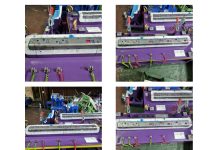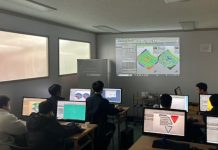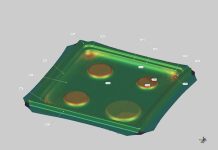The Numisheet conference is one of the most important global conferences on numerical simulation and analysis of 3D sheet metal forming processes. This year, the Numisheet 2022 conference took place in Toronto, Canada from July 10th to July 14th, 2022. As a regular participant in the conference, AutoForm usually contributes application-oriented benchmarks that show the effectiveness of our software code in predicting the future of stamping processes.
This year, the target applied to a springback study of a twist die panel (named for the part’s tendency to twist during springback). Auto-Steel Partnership (A/SP) provided the tooling and part specifications, and the selected materials for the study were DP 980 (1.5 mm thickness) and 6000 series aluminum alloy (1.5 mm thickness).
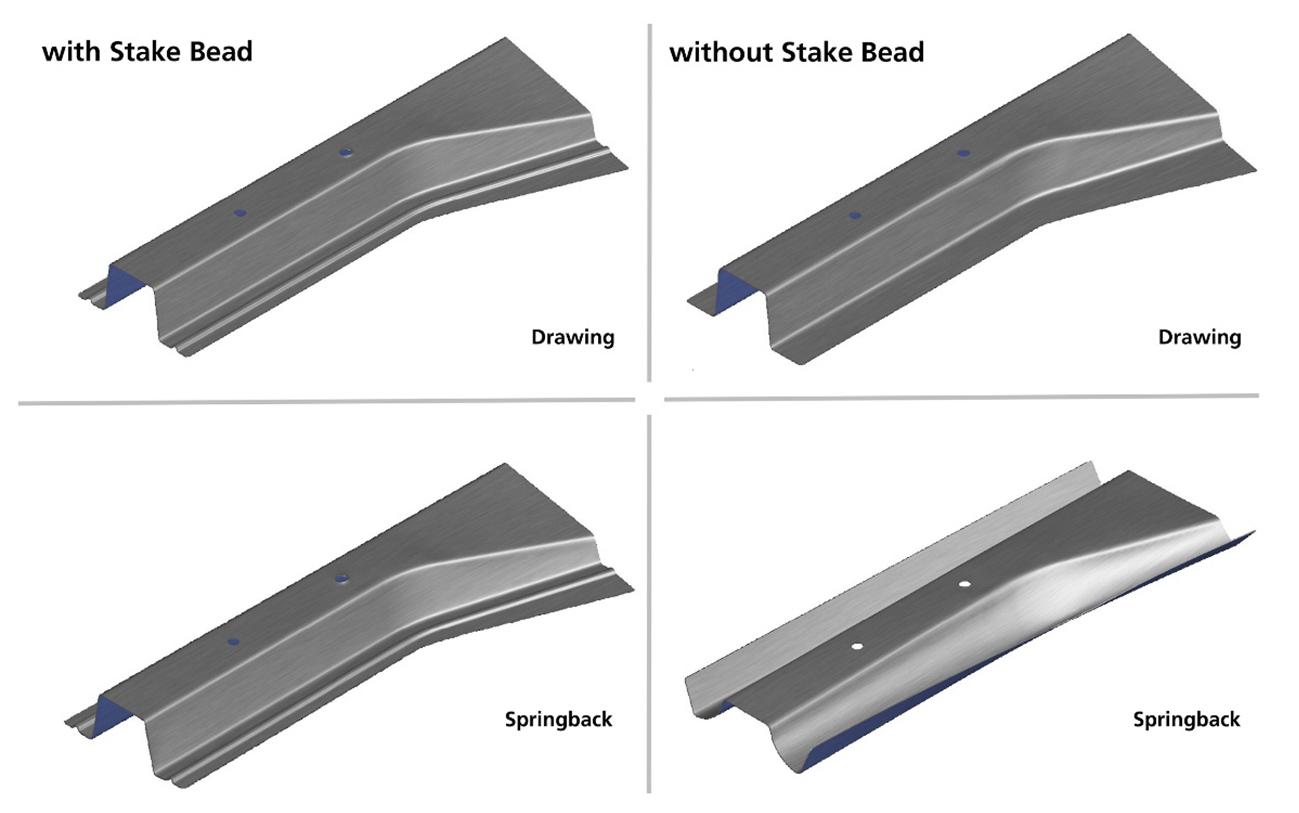
Fig. 1: Twist die panel with and without stake bead along with the corresponding springback
The participants aimed to predict the springback for the part under two different processing conditions. The first condition was a constant gap between die and binder that restricted metal flow. The second condition involved the use of a stake bead—a feature resembling a draw-bead that acts like a miniature punch and stops the flow of metal from the binder into the die cavity in the last few millimeters of the punch stroke. Thus, in the end, draw forming becomes stretch forming. These panel types are also prone to developing a side wall curl which, combined with stretch forming, makes it a challenge to control springback. As a result, twist die panels are the perfect choice for advanced simulation validation.
The Participants
The Numisheet 2022 Benchmark 1 study consisted of the following five participants:
- LS-Dyna
- Inspire Form
- AutoForm Forming R10 (AutoForm customer)
- AutoForm Forming R10 (AutoForm team)
- Stampack
Indeed, in addition to our own team, an AutoForm customer participated in the benchmark study. Thus, four different codes competed to simulate the sample part under various conditions.
The part was divided into several cross-sections along its length. The participants then recorded the coordinates at 19 predetermined reference points (P0 to P18) on five of these cross-sections (Sections 1, 6, 7, 8, 9) before and after springback.
All participants used shell elements, except for Stampack, who used volume elements.
The Results
The results showed that AutoForm continues to maintain the foremost position when it comes to effectively simulating sheet metal forming processes, based on the following factors:
- Computation time
- Accuracy
- Average section curvature error
Computation time
Both AutoForm participants took first place at 11 minutes of computation time. These results were 11 times faster than LS-Dyna (126 minutes), 20 times faster than Inspire Form (220 minutes) and 137 times faster than Stampack (1514 minutes).
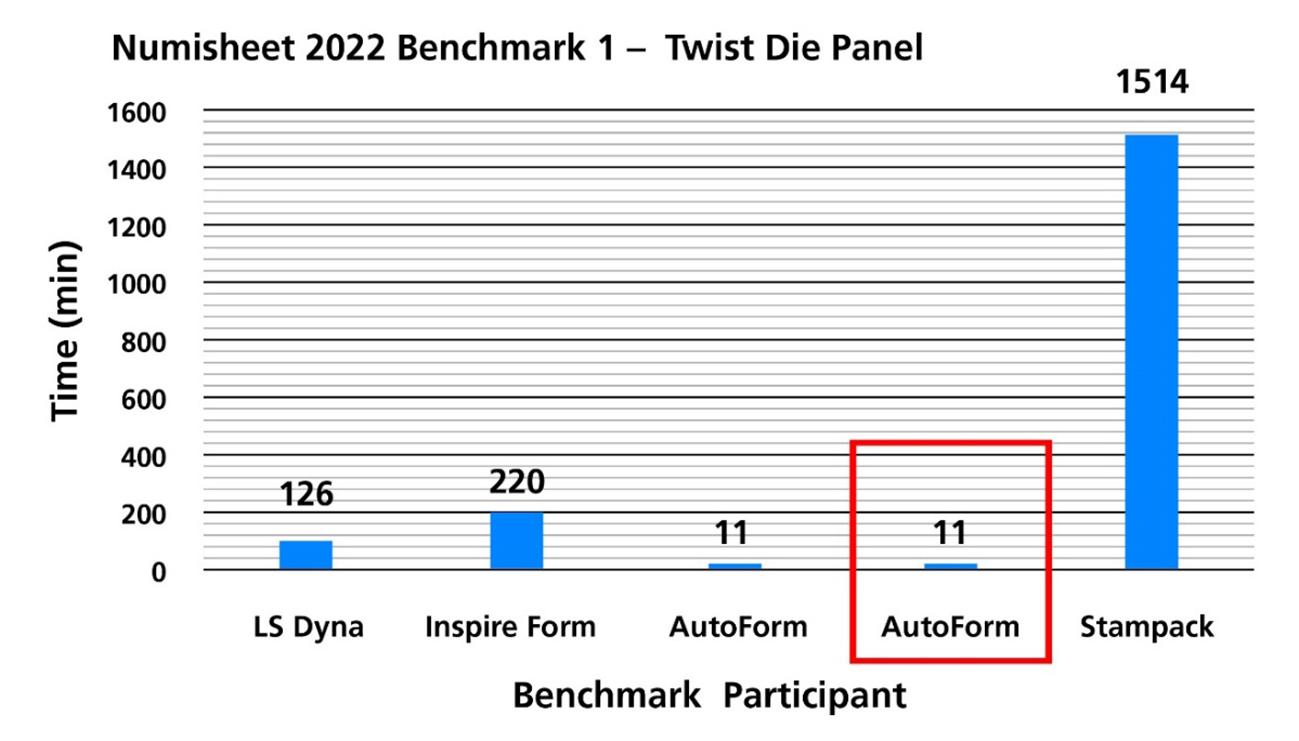
Fig. 2: Computation time
This shows that AutoForm is not only fast but also easy to learn, as the customer generated results using the software as quickly as AutoForm’s professional team.
Accuracy
More importantly, when it came to accuracy, AutoForm was the clear winner. There were a total of four trials: DP 980 with stake beads (1) and without stake beads (2); and 6000-series aluminum alloy with stake beads (3) and without stake beads (4).
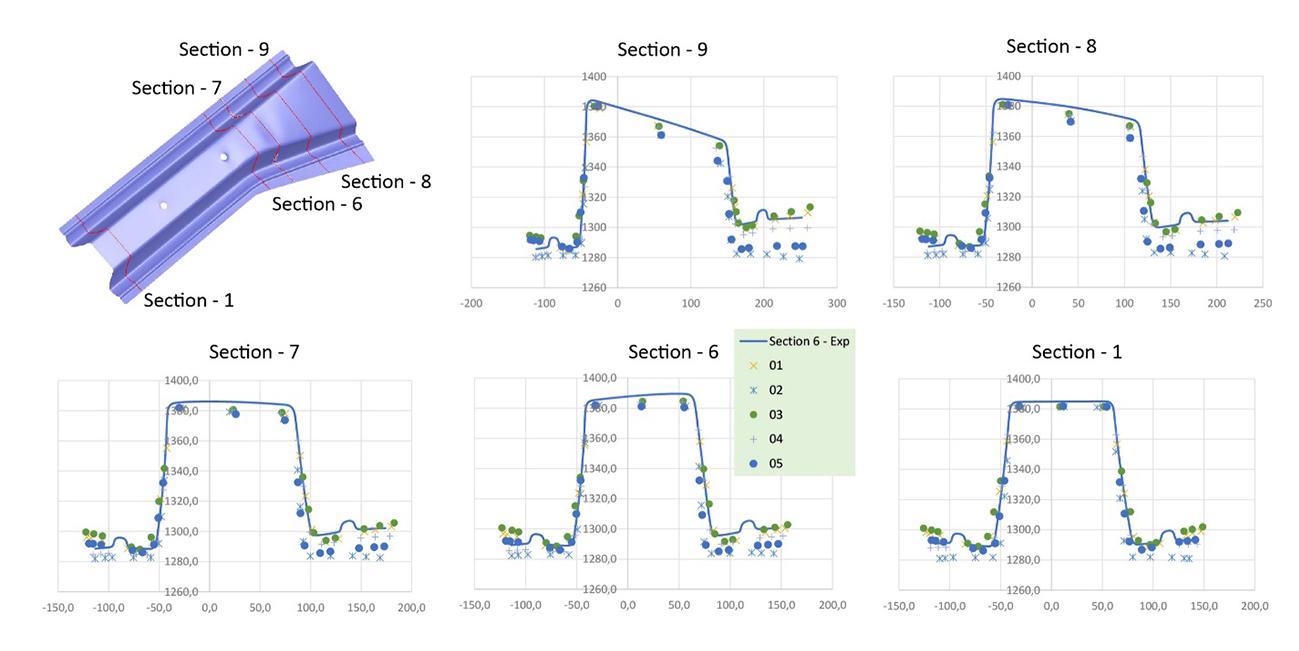
Fig. 3: DP 980 with stake bead
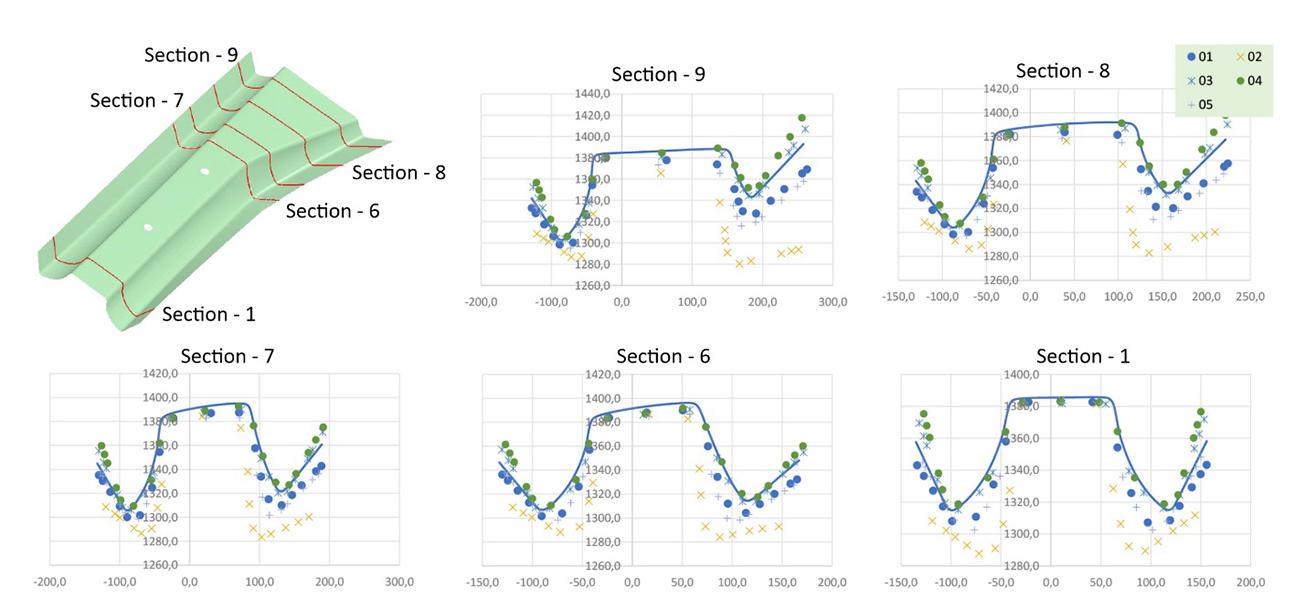
Fig. 4: DP 980 without stake bead
In all four trials, AutoForm’s results were very close to the experimental results. In contrast, competitor results showed high deviation from the actual results.
This reflects that our results are consistent under different processing conditions.
Average section curvature error
When measuring the curvature of the side wall curl, the smaller the error on the vertical axis the more accurate the predicted model with respect to the experimental result.
In this case, AutoForm also outperformed our competitors for the two materials and both conditions (with and without stake beads).
Overall results
Among all the submissions, the Numisheet Benchmark Committee awarded the following ratings:
- AutoForm ranked highest for DP980 with stake bead.
- Inspire Form received the highest rating for DP980 without stake bead but AutoForm results were rated equally as high.
- AutoForm ranked highest for 6000-series aluminum alloy with stake bead.
- AutoForm received the highest rating for 6000-series aluminum alloy without a stake bead.
Behind the scenes of the AutoForm team’s impressive performance
There was nothing special about the way our AutoForm team approached the problem.
As always, we started with the part specifications to design the process. We then looked at the process and the information provided from a physical point of view. Following, we took a look at the numerical settings and how well they represented certain physical phenomena.
A crucial task in the benchmark study was preparation of the provided material data, which only encompassed physical data. Based on the subsequent tests, we created the material file to represent the behavior of the two materials used in the study. DP980 is a high strength steel which shows high springback due to its high stress levels. The other material was a 6000-series aluminum alloy, a very common material grade in the automotive industry showing high springback due to the lower Young’s Modulus compared to steel.
We reviewed all the data over a given range and applied the default material recommendations. In addition, we used the combined Swift-Hockett-Sherby hardening law and applied the Vegter2017 material model including a default forming limit curve.
As you can see, we merely applied the default methodologies to prepare the materials for the simulation. While it was small, the part consisted of industrial geometry. For our final validation settings, we used the default recommendations for element refinement, step size control, etc.
When submitting the benchmark, we deferred to the default recommendations because we believed they were the right settings for the part. Fortunately, these recommendations did not let us down—we took significantly less time compared to the other codes without compromising on the result.
Our methodology also explains how the AutoForm customer (Participant 3) was able to obtain equally good results as the AutoForm team on multiple fronts. It is safe to say that the customer also used the default recommendations, showing that our customers can effectively duplicate our teachings in their own organizations.
Significance of conferences like Numisheet
The Numisheet conference is a global sheet metal forming conference that draws eyes from all over the world. Many stakeholders are interested in learning about the latest in sheet metal forming simulation.
This information proves instrumental in improving simulation accuracy.
This year, since the conference was held in North America and due to travel restrictions caused by the pandemic, participation was lower from Asian entrants. It was the 11th international conference. The most recent conference, Numisheet 2018, was held in Tokyo, Japan, with plenty of interest from the Asian market, especially Japan. Many Japanese automotive companies and simulation vendors were present and participated actively in the conference and have since closely followed our benchmark activities.
Conclusion
Through the Numisheet 2022 benchmark study, AutoForm proved that it provides the most rapid, accurate, and consistent solution among all market competitors when it comes to springback prediction. At AutoForm, we are delighted to see this performance from our software at a conference as distinguished as Numisheet.






